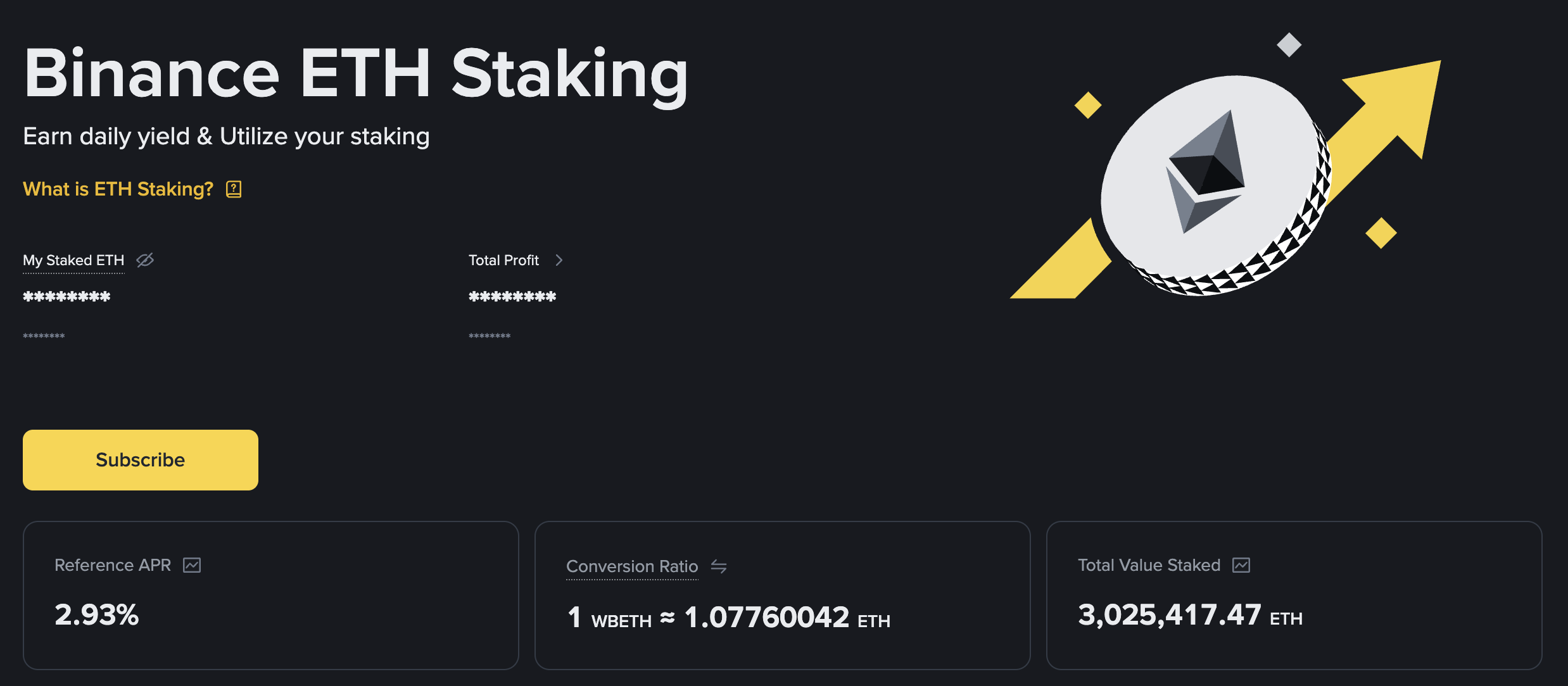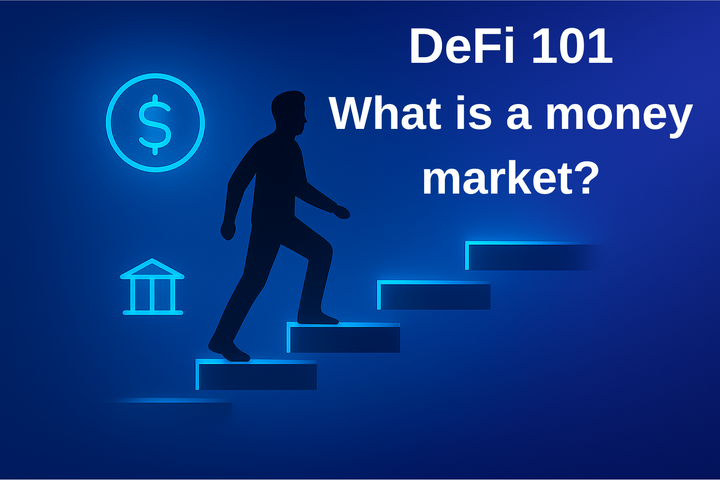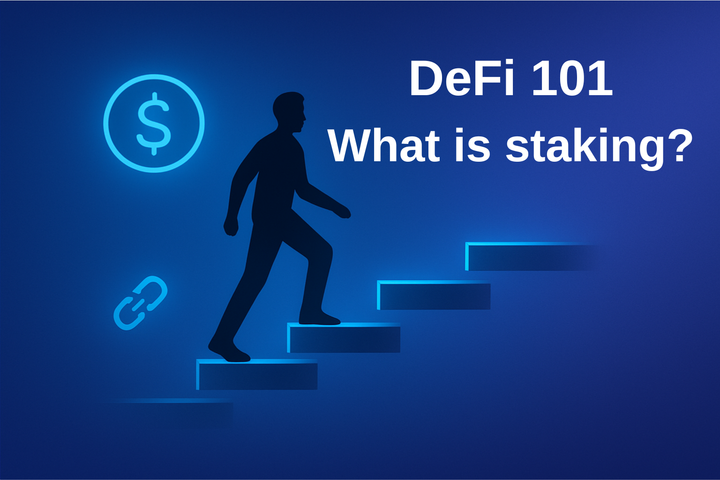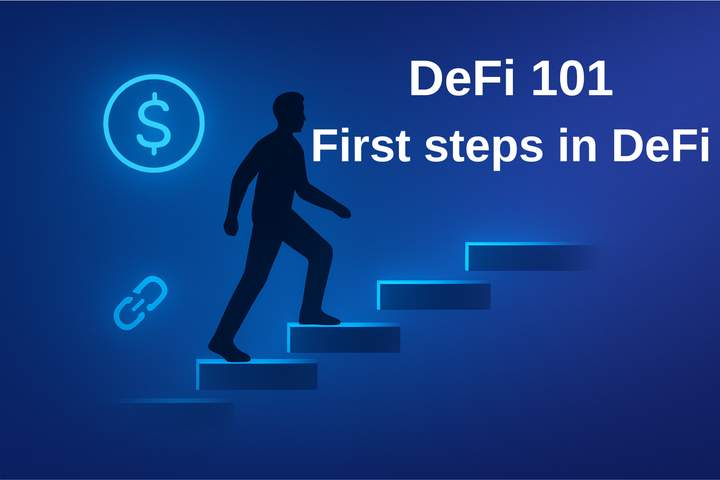DeFi 101: What is DeFi and can I earn money from it?
Dive into the opportunities and the risks DeFi has to offer

Before you do anything, read this post to understand what DeFi is and what the pros and cons are!
There are many people out there, and maybe you're one of them, that hold cryptocurrencies on a centralized exchange (CEX) account. Whether it's just holding, or directly staking on the CEX, they're simply not aware of all the possibilities DeFi has to offer.

For example, Binance has Ethereum staking. Many people might hold WBETH on Binance, but they might not realize that Binance is actually staking their ETH directly on the blockchain. In this case, Binance acts as the middleman.
Recently, Coinbase announced that its users will soon be able to trade onchain assets directly through the coinbase app.
According to Defillama, the current total TVL in DeFi is over $150bn!
TVL is the dollar value locked/deposited in DeFi protocols! It represents the amount of capital users have committed to lending, liquidity provisioning, and other smart contract functions on a given platform or across the entire DeFi ecosystem.
TVL serves as a key metric to gauge a project's growth, user trust, and adoption.
What is DeFi?
DeFi stands for Decentralized Finance. It’s a new kind of financial system built on blockchains (mostly Ethereum, but also others).
Instead of relying on banks, brokers, or payment processors, DeFi uses smart contracts — self-executing code that runs on the blockchain — to provide financial services like:
- Lending & borrowing
- Trading assets
- Earning interest (staking, yield farming)
- Payments and stablecoins
Basically, it’s like rebuilding the financial system with open-source software that anyone with an internet connection can use — without asking permission from a bank.
Click here to view the biggest stablecoins.
What are the Pros and Cons?
✅ Pros of DeFi
- Open Access – Anyone with internet and a crypto wallet can participate, regardless of location or income.
- Transparency – Transactions and code are visible on the blockchain.
- Control – You hold your own assets.
- Efficiency – Transactions can settle 24/7 without intermediaries.
- Innovation – Constant new financial products
⚠️ Cons of DeFi
- Complexity & Risk – Interfaces can be confusing, and mistakes (like sending funds to the wrong address) are irreversible.
- Volatility – Many DeFi tokens are highly volatile, which can wipe out gains.
- Security Vulnerabilities – Smart contracts can have bugs or be hacked, leading to big losses.
- Regulatory Uncertainty – Governments may restrict or heavily regulate DeFi in the future.
- No Safety Net – Unlike banks, there’s no insurance (like FDIC) if things go wrong.
👉 In short: DeFi is like the wild west of finance — full of opportunities, but also full of risks. It gives freedom and innovation, but requires caution and knowledge.
Is investing in DeFi harder than simply investing in ETFs?
Yes, of course, but it's much more exciting and the upside is much higher (as well as the downside). Indeed, crypto is a very volatile space. The risks are very high and not for everyone.
Nonetheless, if done properly, you can make safe and steady gains in crypto. Stablecoins usually are a good way to achieve this goal. There are countless opportunities to generate yield with stablecoins.
Depending on the market conditions, your portfolio management, risk aversion, and a bit of luck, you can easily achieve 10%+ APR. 20% APR is also feasible depending on market conditions and how much risk you are willing to take. Some people can achieve much higher results, especially if they use leverage strategies or good airdrops!
APR is a financial metric that represents the annualized rate for a financial activity or loan. It provides a standardized method for comparing different financial opportunities without considering the compounding effect of compensation.
For example, if you have $10k and you obtain an APR of 10%, you will have earned $1k.
Is DeFi for me?
Now, you're probably wondering whether you should try it and if you'll be good at it!
To be honest, it mostly depends on whether you're willing to invest some time into learning the intricacies of DeFi.
If you think that you're willing to put in the work, but you're afraid to start, my suggestion would be to start small and get some practice. In the beginning, it looks very complicated, but once you've done a few on-chain transactions, you'll realise that it's not that hard.
However, DeFi is often compared to the Wild West of finance for a reason. It is risky and one careless mistake can cost you your entire portfolio. If you're the kind of person that gets caught by fake links or scam emails, I'm sorry to tell you that there are lots of them in crypto. Crypto users are heavily targeted by scams because it's easy to take people's money if they approve the wrong transaction. Hence, you must always be vigilant when using crypto.
Make sure to read this article for safety tips!
Furthermore, you probably wouldn't buy ETFs with only $100, the same "rule" applies to DeFi. A minimum required amount is probably around $1000. You can also yield farm with $1k or less, but is it worth it if you farm at an APR of 10-15%? Up to you to decide depending on your financial situation.
Finally, my paid newsletter walks you through how I manage a $10k stablecoins portfolio, which will give you good ideas for your own portfolio.
Check the next part in this guide: create a Centralized Exchange (CEX) account!





Comments ()